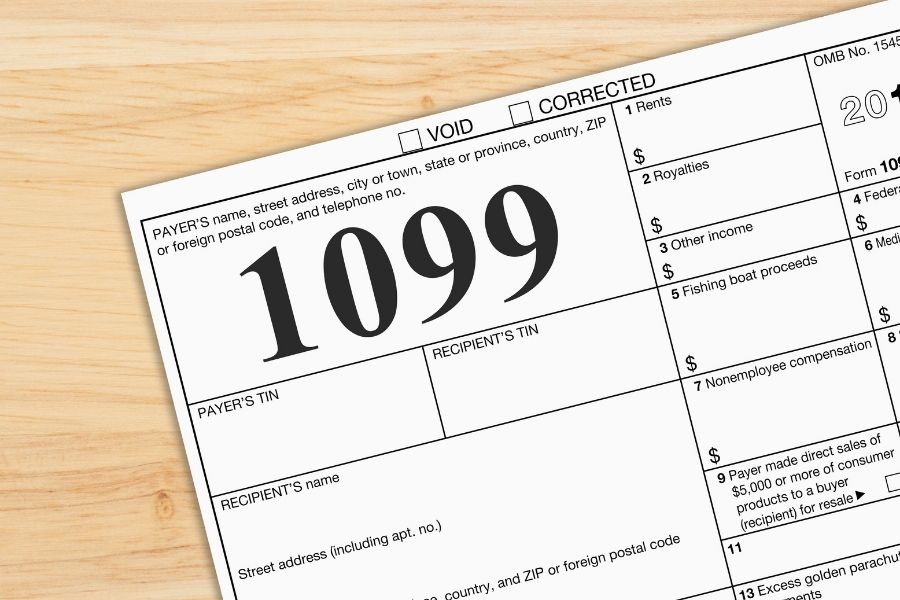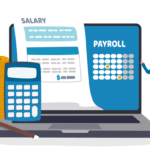Your 1099 employees, also known as “independent contractors,” are important to getting things done at your company while staying within budget. Besides the money your company saves on Medicare and social security taxes, oftentimes, it’s easier to outsource a project to an experienced freelancer than it is to hire, train, and provide benefits for more full-time staff.
Making sure you pay your 1099 employees correctly is crucial to maintaining great relationships with these team members, and of course, you always want to stay in the good graces of the IRS! Read on for a beginning-to-end checklist to help guide you through the process of accurately paying your 1099 workers.
First of All, What is a 1099?
A 1099 is an IRS information return tax form used to record non-employee income. Businesses who employ independent contractors use 1099 forms to report payments made to contractors in exchange for services the contractors provide.
As of 2020, the IRS requires businesses who use independent contractors to file form 1099-NECs. While the 1099-MISC is still used to report general non-employee income; the 1099-NEC, however, is specifically for independent contractors. Independent contractors use 1099s to calculate and pay their taxes.
Federal law mandates businesses must file 1099s for each independent contractor to which they’ve paid $600 or more for services over the course of the year. Businesses who do not file may be assessed penalties by the IRS. Compliance in this area is crucial.
Step-by-Step: How to Pay 1099 Employees
Step 1: Know Which of Your Team-Members are 1099 Employees, and Which are Not
It’s important to make sure you’re not paying someone as a 1099 contractor when they’re really an employee. If you do this, you may face penalties. To help decide which of your team members are true independent contractors (who will receive a 1099) versus employees, consider the following factors:
Factors that lean toward employee classification:
- Paid a salary or hourly wage
- Required to be at work or working on your company’s projects at certain times (i.e., 9:00-5:00, or Monday-Friday)
Factors that lean toward 1099 independent contractor:
- Self-employed
- Owns an LLC through which they provide services (but that is not taxed like a corporation)
- Control over when and how they work, though you the business may specify how they want the job completed
- “freelancer,” i.e., web developer, designer, content creator, consultant, etc.
- Perform ad-hoc services like maintenance, or regularly schedules services like cleaning, either independently or through an LLC not taxed like a corporation
Step 2: Know the Components of the Form 1099-NEC
Once you’ve determined which of your team members need 1099 forms and which do not, you’ll need to know the basics of filling out the form. The form requires the following information:
- The name and address of your company
- Your company’s Taxpayer Identification Number, abbreviated as TIN
- The TIN of the independent contractor. Note: it’s important to get the right TIN from independent contractors, so you will not be responsible for paying their backup withholdings.
Step 3: Ask your Independent Contractors for a Filled-Out W-9
Require each 1099 employee to fill out a form W-9, and keep a copy for your records. Do this as soon as you can, because you will need to receive it by the end of the year, before you file your company’s taxes. The form W-9 will provide you with the information you need to fill out their 1099 forms. The W-9 form provides the following information:
- The independent contractor’s TIN
- Their business name, if they have one
- Their social security number and contact information
Step 4: Send the 1099 to the Independent Contractor
After filling out a 1099 for each independent contractor, you must mail them to their provided address by January 31st. The 1099 should provide the contractor with an accurate total of what they’ve been paid by your company for their services that year.
Make sure you’ve got at least two copies of the 1099: one for the independent contractor, and one for your company’s taxes.
Step 5: File Your 1099s (On Time!)
Your company must file all 1099s with the IRS by January 31. As of February 1st, they are considered late if you haven’t gotten around to filing them!
1099s can either be mailed in, or e-filed, unless you are filing more than 250 form 1099s – in that case, you must e-file. Know that if you choose to mail in your 1099s, you’ll also be required to fill out and file a 1096 form accompanying each 1099.
Dealing with compliance requirements for 1099 employees can be tricky. Would your company benefit from complete access to certified HR and compliance experts? If so, it’s time to contact Benely.






